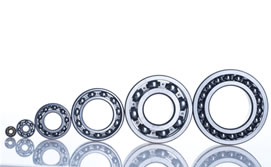The growing demand for high precision products has converted microengineering into one of the most attractive fields for researchers and entrepreneurs all over the world. Specifically, it’s expected that the global demand for microcomponents will grow very quickly in sectors such as automobiles, biotechnology, electronics and medicine.
The main goal of the Micromanufacturing project is to make a qualitative leap forward in microengineering technologies, through the joint work of a consortium including 21 partners with vast experience and acknowledged prestige in the field of precision manufacturing. The project is supported by the Spanish Ministry of Science and Innovation and the European Regional Development Fund (ERDF), and came about as a response to the numerous economic forecasts pointing to sustainable growth in microtechnologies of over 10% per year in coming years.
One of the techniques that is being reinterpreted by researchers is incremental dieless forming, a metal forming process that is commonly used for manufacturing parts in sectors such as automobiles. Under this method, the part is formed by small impressions that are successively imprinted on specific areas of the metal. The process begins with a 3D CAD design of the part and, in an automated process, makes the part from the metal.
This technique had never been used on such a small scale until now. The preliminary results obtained by the Ascamm Foundation, which is part of the consortium, show that it is possible to incrementally form metal only 50 µm thick. Temperature can be used with this very thin metal in order to make it more moldable.
Other technologies covered in the project are micromachining, laser micromachining, microelectrical discharge machining, micromolding of metals, microinjection of plastics and the design of machines and systems for super-precise control, among them a milling machine that can make parts smaller than 5 microns with absolute precision.
